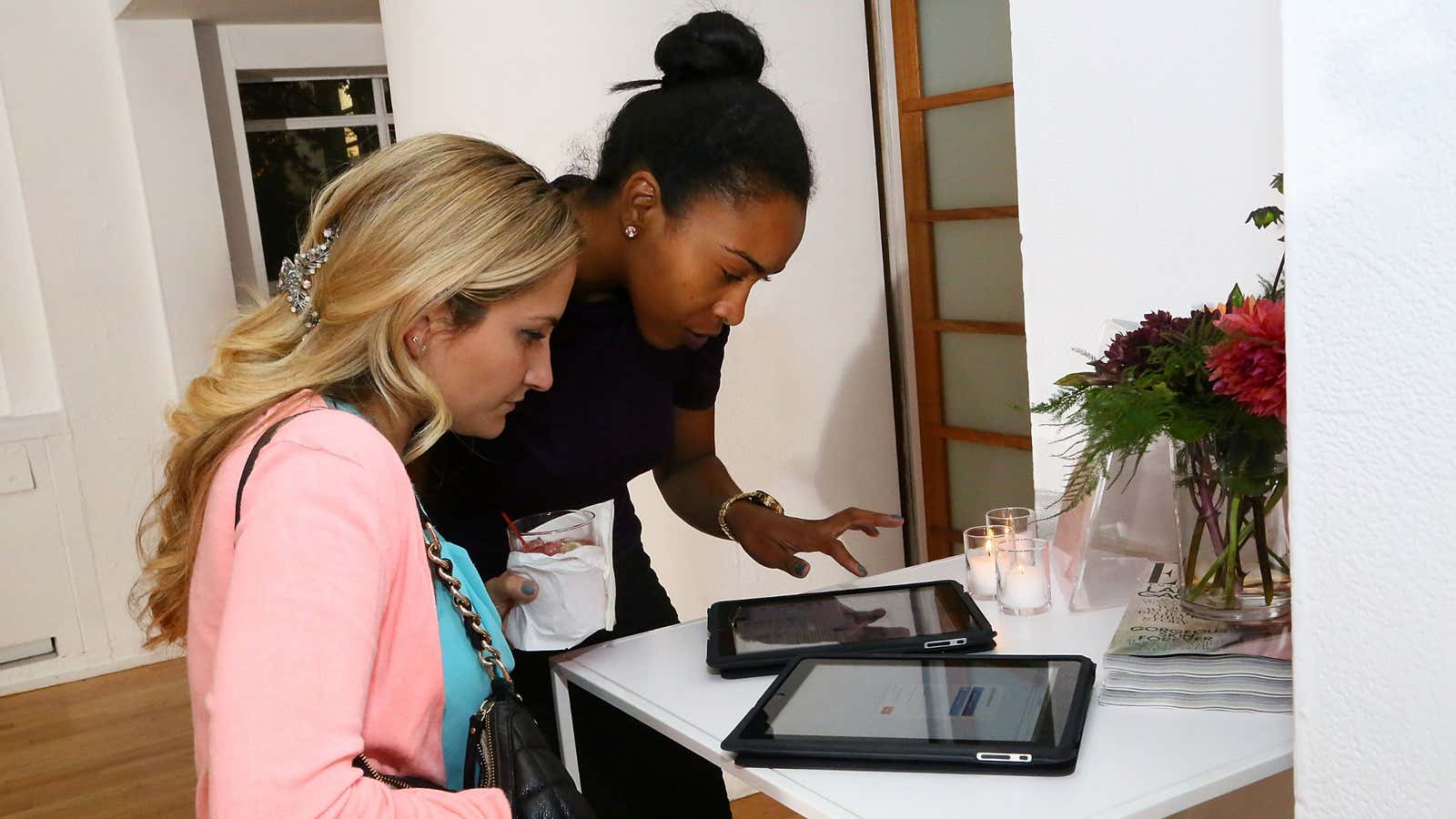How does Pinterest make money? Oh, that’s right: It doesn’t yet.
In its latest round of financing, the social network—a virtual scrapbook for sharing all sorts of ideas visually—raised $225 million, and was valued at $3.8 billion. Just this past February, it was valued at $2.5 billion. But as with the Instagram valuation craze that came before it, Pinterest has yet to generate any revenue.
When Facebook bought Instagram last year, the photo-sharing site was valued at $1 billion dollars, which is just under a quarter of Pinterest’s latest price tag. So how is it that Pinterest’s pictures of bathroom redos and snickerdoodles fetch more than Instagram’s selfies? The answer lies in the audience.
Instagram may have more than 150 million monthly active users. (To put that in perspective, consider that Twitter recently announced it had only marginally more than that—some 200 million—this past March.) But the mentality driving Instagram’s army of photo takers isn’t all that commercial; they’re just people posting and browsing pretty pictures of their personal life, or themselves. Pinterest, on the other hand, is about more than that, commercially speaking. Its roughly 50 million active monthly users avidly pursue photos of wedding spreads, house decor, artisanal jewelry and other knick knacks that stimulate their consumer desires—an activity akin to window shopping. Pinterest’s “pinboards,” which allow its users to create groupings of things they like, are essentially user-created window displays.
To monetize its fast-growing audience—and in doing so justify its nearly $4 billion valuation—the company has to get all those window shoppers to buy. But it’s a tough sell; it’s easy enough to help funnel users clicking through pictures of, say, Anthropologie products to Anthropologie’s website. But Pinterest is notoriously gun-shy with its customers, er, users, and has been slow to adopt blatant ads or sponsored content.
Thus far, the solution has instead been to focus on less disruptive revenue builders. Pinterest’s “rich pins,” for example, allow businesses to post pictures with real-time pricing, availability and information on where to buy certain products, without bombarding users with ads. The company’s other major revenue play is in analytics; companies can now track the number of people posting, sharing and clicking on their content with Pinterest’s new tool, Pinterest Web Analytics. Instagram, on the other hand, has resorted to more traditional ads; the company recently announced that new sponsored photos and videos will soon start appearing on users’ photo streams.
Still, investors likely have other plans. What’s driving the high price tag for Pinterest is probably potential ad sales tied to its growing user base. As analytics company Jirafe’s CEO Amit Shah told Forbes back in July, “Pinterest drives traffic, not revenue.” For its part, Instagram is still struggling to make money a full year after Facebook bet on its future earnings. That’s left Pinterest to quietly continue feeling out its options while the pinners keep piling in.
